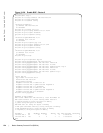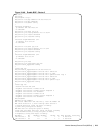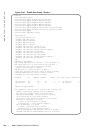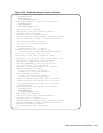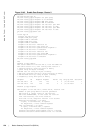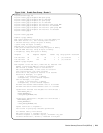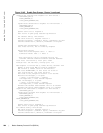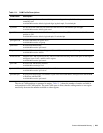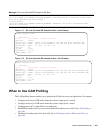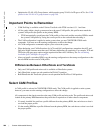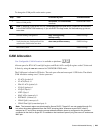
282 | Content Addressable Memory
www.dell.com | support.dell.com
• The ExaScale EH and EJ series line cards are single-CAM line cards that support 10M and 40M CAM
for storing the lookup information.
• The TeraScale EG-series line cards are dual-CAM and use two 18 Megabit CAM modules with a
dedicated 512 IPv4 Forwarding Information Base (FIB), and flexible CAM allocations for Layer2,
FIB, and ACLs.
• Either ExaScale 10G or 40G CAM line cards can be used in a system.
CAM Profiles
Dell Force10 systems partition each CAM module so that it can store the different types of information.
The size of each partition is specified in the CAM profile. A CAM profile is stored on every card,
including each RPM. The same profile must be on every line card and RPM in the chassis.
There is a default CAM profile and several other CAM profiles available so that you can partition the
CAM according to your performance requirements. For example, the default profile has 1K Layer 2
ingress ACL entries. If you need more memory for Layer 2 ingress ACLs, select the profile l2-ipv4-inacl.
Table 11-1 describes the available profiles. The default profile is an all-purpose profile that allocates CAM
space according to the way Dell Force10 systems are most commonly used. In general, non-default profiles
allocate more space to particular regions to accommodate specific applications. The size of CAM
partitions is measured in entries. The total CAM space is finite, therefor adding entries to one region
necessarily decreases the number available to other regions.
Note: Not all CAM profiles and microcodes are available for all systems. Refer to the Command Line
Interface Reference Guide for details regarding available profiles for each system.



